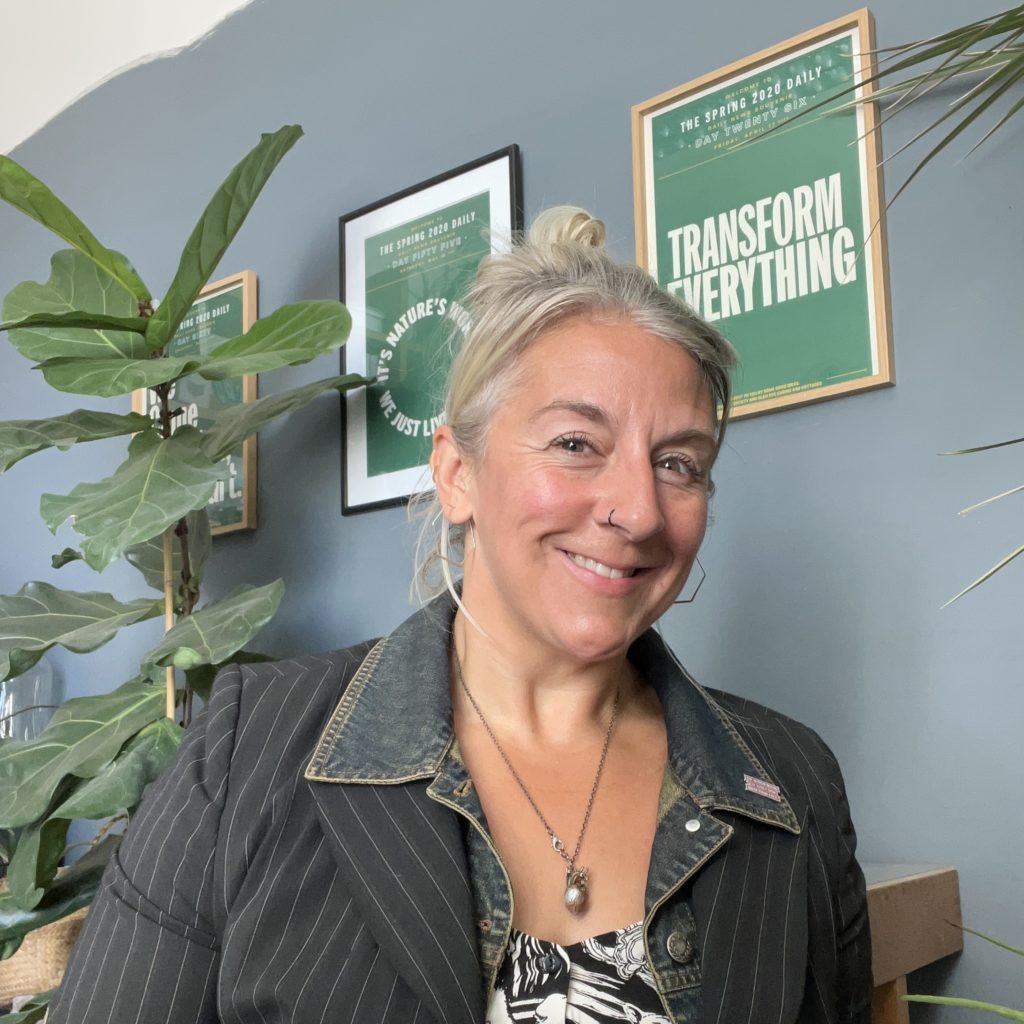
Claire Potter is a Senior Lecturer and the course convenor of the BSc / BA Product Design degrees, teaching on and leading on a variety of modules. In this case study, Claire describes how module and course design help develop students’ insights, skills and confidence in generating and presenting research outcomes.
What I do:
My final year module, ‘The Role of Design in the Circular Economy’, uses a 6-week mapping project to engage students in preparatory analysis and evaluation to inform their subsequent design project submission. The mapping task asks students to research the businesses, users and activities along a Brighton street (this year it’s stretch of London Road) and communicate, in a map format, how they each represent or fit within circular economy principles. I break the principles down into a set of categories and encourage students to come up with their own too. The ‘map’ can be hand-drawn, 3D, digital or interactive – it is completely up to the student. Whatever the format, a viewer must be able to clearly identify the business, service or store – and how it does or doesn’t fit into the circular economy.
In Week 6, students deliver a 5-minute presentation of their map, their understanding of the road and how the circular economy is demonstrated in that space.
Why I do it:
The outcomes of this assessment directly inform the subsequent design portfolio submission of a product that will increase engagement in the circular economy. Their design must originate from a clear need and can be sold or utilised by businesses or users of the road. The product must be 3D (designed to be made of stuff) but can include an app or digital element.
While the design portfolio is a little more structured, I remain flexible about the format of the map. This enables students to play to their strengths as designers, encouraging them to dig deeper into processes they love. The marking and feedback (verbal on the day of the presentation followed by written marks and feedback using a rubric) focuses on the quality of students’ research and reflection and their communication through the map and presentation. Students are also encouraged (within time limits) to ask questions or comment on their peer’s talks.
The 5-minute map presentation slot is purposefully short. It makes it manageable for markers but, importantly, also enables students to practice delivering research outcomes in a clear and concise manner. This is one stage in the incremental development of our students’ skills and confidence in presentations, beginning in first year with formative group presentations, which help prepare our students to deliver a 15-minute solo presentation (on 4 months of work) as part of their final year design project module.
Impact and student feedback:
The mapping exercise helps students understand how to work with and communicate data in a different way, in a format people can use. Also, while students tell me they find it challenging (there are a LOT of shops to explore) they also say they find it interesting, meaningful and that they appreciate the opportunity to apply the knowledge they’ve been learning.
Future plans:
Students put a lot of time and effort into the mapping project. So much so that, from 2024/25, the weighting of this element will increase from 20 to 30 percent. So that my current students don’t feel hard done by, and to check my logic, I’ve discussed with them how the marking criteria will be adapted for future cohorts to reflect the new weightings.
Top 3 tips:
- Provide marking criteria from week one and ensure students understand what they need to do to meet them.
- Remind students that the module contact time is not project time – they are expected to engage in X-number of hours of self-directed research.
- Mitigate students’ anxiety about presenting by giving them some control over when they speak, e.g. to tell you if they’d rather not go first or would prefer to present immediately after a friend.


Leave a Reply